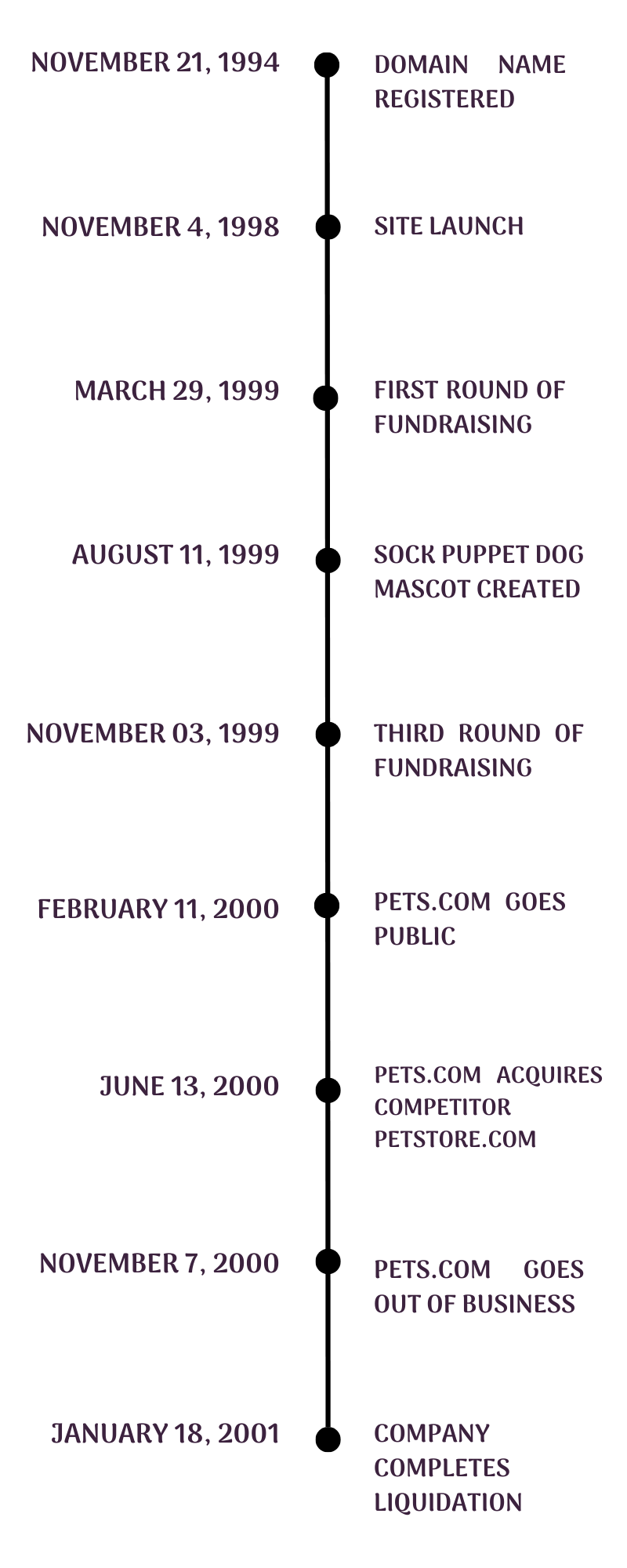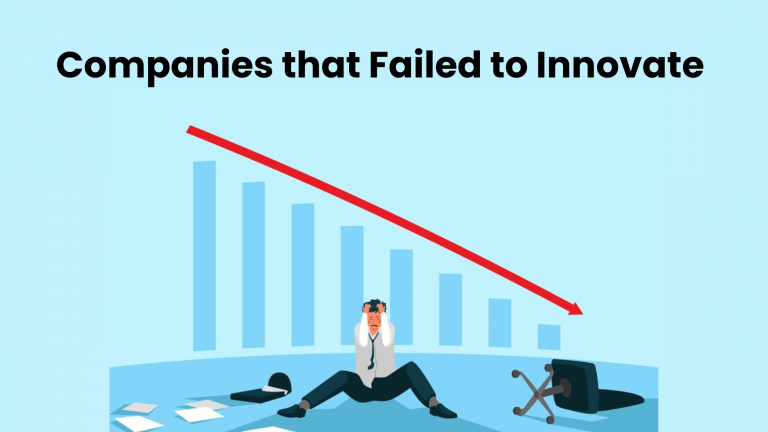Companies that failed to innovate quite evidently grapple with innovation challenges. Whether you trace a company’s growth in the past or present, you’ll find a few common mistakes that they all do.
As they say, you learn from mistakes more than you learn from successes. These mistakes and failures don’t necessarily and always have to be yours. You can learn from history and ensure you don’t make the same mistakes.
So, let’s drive straight into it.
10 Companies that Failed to Innovate Resulting in Business Failure
Here are 10 businesses that failed to innovate.
Polaroid Corporation
Founded in 1937, the Polaroid Corporation is well known for their instant film and cameras. Even now, the term “Polaroid” is used when discussing instant photography.
People may take and print photos immediately and hassle-free with Polaroid’s retro cameras.
The company’s revenues hit $400 million in the late 1960s, and in the 1970s, it gained notoriety for its capacity to create instant prints.
When Kodak introduced instant film cameras in 1976, Polaroid filed a lawsuit against them because they had such a strong market position and compelling value proposition. Claiming to have a proprietary instant photography method, Polaroid demanded $12 billion from Kodak for patent infringement.
And, of course, a cease to instant picture production.
Although the case lasted for ten years, in the end, Polaroid won the case and received $909.5 million.
By 1991, its revenue reached $3 billion.
Here’s what went wrong.
Related Read: Polaroid corporation Failure
Lack of Diversification
Polaroid executives refused to diversify. In the past, Polaroid boasted an incredible 65% gross margin on instant film. It established the business’s economics. As a result, Polaroid executives decided against diversifying.
The founder of the corporation, Edwin Land, declined to spend more money on electronics. Instant film meant everything to them. This led to significant financial mismanagement and large expenditures on research and development for digital imaging.
Rather than welcoming business innovation, they persisted in believing that hard copy prints will always be in style.
Shift to Digital Photography
Its competitor, Canon, was quickly developing digital cameras, which became popular in the market. This had put Polaroid at a disadvantage compared to Canon. Overall, Polaroid’s inability to keep up with the innovation in digital photography contributed to its decline in the market.
Minimal Innovation Efforts
They did not try to match the ever-changing consumer trends and market landscape. Instead, they chose to stick to their one solution, i.e., paper print.
Microsoft Zune
Based in Washington, D.C., Microsoft Corporation is a prosperous international technology corporation. The Windows operating system, the Microsoft Office suite, Internet Explorer, and Edge web browsers are some of Microsoft’s best-known software products.
However, Zune, a discontinued media management software, was excluded from the list of Microsoft innovations.
Microsoft assumed that Zune will be a direct competitor to the iPod in terms of functionality and pricing. However, it failed to acquire even 10% of the mp3 market share.
Adding to the bad timing of the device release, Apple’s strategic shift to smartphones with built-in MP3 players made it worse.
Despite being one of the IT industry leaders, Microsoft failed to innovate in its media management product.
Regarding features, Microsoft released a carbon copy of the iPod and failed to innovate and solve any genuine problems of the consumers.
Related Read: Microsoft Zune Failure
JCPenny
Founded in 1902, JCPenney is an American department store with its main office located in Plano, Texas. It provides a large selection of goods to consumers, ranging from jewelry and furniture to clothes and shoes. Their affordable prices were a major factor in their stores’ popularity. In 1973, JCPenney operated more than 2,000 stores across the country, marking its peak number of locations.
However, the following factors contributed to its gradual decline:
- Intense competition: Consumers’ preferences shifted towards online shopping and more discounted offers. But JCPenney ignored the shift.At the same time, Walmart embraced the new force and made it a central part of its business model. Walmart invested in building a robust online platform, which allowed them to reach a wider audience, offer a seamless shopping experience, discounts, and respond quickly to the changing market demands. All this rendered JCPenny obsolete.
- Overlooking loyal customers: JCPenny’s had been severely affected by several recessions and was outdated. Ron Johnson was chosen by the business to serve as its CEO. He gave the business a completely new look, overlooking the needs of its committed customers.
- The pandemic: The pandemic in 2020 served as the major catalyst for the JCPenney bankruptcy and its decline. Like many other retailers, JCPenney was hit hard by COVID-19, which forced the temporarily JCPenney store closures. This disrupted its supply chain.
Related Read: JCPenny Bankruptcy
Blockbuster
Throughout the 90s and the early 2000s, Blockbuster was the most renowned video-rental company in the US. However, the company’s failure to break out of their out-dated innovation model led to their gradual decline.
For instance:
Blockbuster’s income was mainly based on late fees, a model that penalized customers for keeping their VHS cassettes for too long. This strategy did not last long.
Even when the demand for online streaming increased among consumers, Blockbuster ignored it. But its competitors, such as Netflix recognized the potential and invested their innovation efforts into it. Another factor in the company’s demise is the crucial mistake Blockbuster made by rejecting an agreement with Netflix. Blockbuster experienced the beginning of its demise in 2004 when Viacom sold its majority stake in the video renting business.
Apart from the external factors, the company’s internal leadership disputes contributed to Blockbuster becoming one of the companies that failed to innovate.
Related Read: Blockbuster Failure
Xerox
A prime example of the importance of innovation management is Xerox Corporation, which was once a leading American corporation in the photocopy industry.
Xerox was successful in transforming the photocopy industry with its development of xerography, a dry photocopying technique.
Despite its early success, the inability to capture innovation led to Xerox’s failure.
The company also ventured away from its core business too many times. For example:
- Introducing the Xerox Star, a $16000 workstation designed solely for document management.
- Working with E-Z Pass, automated traffic tickets, and even Medicaid.
- Venturing into insurance and financial services.
Soon the world saw an increase in the demand for personal computers and the need for copiers and printing systems decreased. Xerox’s company failure to recognize the potential of personal computing technology led them to a path of stagnation.Xerox could have made huge profits off its employee innovation if it hadn’t made an alliance with EDS. They both (EDS and Xerox) entered into an outsourcing agreement in 1994.
Xerox initially transferred to EDS about 2,000 employees who performed operations with clearly high levels of efficiency, retaining only a staff of less than 400, primarily planners.
Related Read: Xerox Failure
PanAm Airlines
Pan Am was a pioneering airline in the late 1950s and early 1970s. They were the first airline company to provide regularly scheduled international flights. And by 1958, they had become the world’s most experienced airline.
But everything started falling apart soon!
- One of the reasons for the company’s downfall was the United States government’s refusal to enable Pan Am to establish a connecting domestic route network in the late 1940s.
- Repeated international terrorist attacks against US policy abroad, often directly targeting Pan Am, culminated in the 1988 Clipper 103 disaster.
- The Airline Deregulation Act was proposed in 1978 by President Jimmy Carter. The Deregulation Act offered operators more freedom and control over their services. Notably, the changing circumstances made it easier for startups to achieve success.
- In addition, the aviation sector suffered from the 1970s’ multiple oil crises. Pan Am was practically forced to depend on expensive foreign fuel.
Related Read: Bankruptcy of Pan Am Airlines
Blackberry
BlackBerry was the first company to offer push messaging on their phones. It was one of the first companies to enter the smartphone industry, controlling nearly half of the US smartphone market.
From 2008 to 2016, the mobile industry was rapidly changing, and many businesses perceived this change positively. On the other side, Blackberry was unwilling to change its philosophy. The company didn’t welcome any new models. Consumers began to shift their preferences towards touchscreen devices which became more popular in the mobile market.
On top of it, every year a new iPhone was released. BlackBerry attempted to stay up. It released innovative new devices such as the PlayBook tablet and Torch, but the devices were not well accepted.
The PlayBook was released without email software, making it useless to BlackBerry’s business-minded customers.
Blackberry’s failure is now attributed to its resistance to change, inability to keep up with evolving consumer preferences, rushed product releases, and a narrowed customer focus.
Related Read: Blackberry’s Downfall
TiVo
TiVo Inc., founded in 1999, is an American firm best known for its digital video recorder. It stores and records shows in the same way that a VCR does.
The idea behind launching TiVo was simply to optimize TV-watching for common folks.
And it worked for a while before it started crashing under competition and market pressure due to a lack of business innovation by the founders.
TiVo faced intense competition when its competitors introduced DVR services with similar functionalities. In fact, they went ahead and integrated these functionalities directly into the set-top boxes. Consumers did not have to buy additional hardware.
Then came the era of on-demand content by Netflix, Hulu, and so on. But TiVo stayed clear off it.
TiVo’s story could have been different if they had focused on creating an innovation strategy that focused on:
- Ever-changing market landscape.
- Technological advancements.
- Establishing an innovation culture.
- Introducing new features and functionalities to the product as per consumer needs and demands.
- Strategizing for diversification. So, they can diversify service offerings and revenue streams to reduce dependency on a single market segment.
Pets.com
Here’s a brief chronology of pets.com.

One of the reasons for the company’s demise was its ineffective business strategy and excessive spending.
Pets.com was just burning through their venture capital ineffectively. Their advertising cost alone cost around 20 million dollars!
Furthermore, due to insufficient research, Pets.com was compelled to rely on several assumptions. The business felt that selling only pet products would be sufficient rather than focusing on an online supermarket that could sell pet supplies and other groceries.
Also, Pets.com might have been the first to enter the market, but they weren’t able to remain the sole contributor for very long.
Within months of launching Pets.com, the pet supplies industry saw a huge rise in new players, such as petstore.com, petsmart.com, pettopia.com, petplanet.com, and so on.
Related Read: Pets.com Failure Case Study
Nintendo Virtual Boy
The Virtual Boy gaming console is still one of Nintendo’s biggest failures after more than 25 years. It literally is known for giving people headaches. Gunpei Yokoi, former leader of Nintendo’s internal R&D group, imagined the Virtual Boy as a compact headset that users could put on and play anywhere.
However, Virtual Boy evolved quickly from an idealized pair of lightweight goggles to a hefty headset. Nintendo had to publish liability warnings that the Virtual Boy could cause headaches, nausea, and seizures.
Most Nintendo consoles have come with a robust game library. Unfortunately, the Virtual Boy is the single exception. The Virtual Boy’s game catalog was limited even before the machine was released.
On top of it, the console’s initial price was $179.95 when it was released in 1995. Considering the damage it was causing to children and the inability to provide variety, it is a high price.
Related Read: Nintendo’s biggest failures: Virtual Boy
Why Companies Fail to Innovate?
Whenever you ask anyone from the top management about their top priority as a leader, you’ll hear a static answer. It’s to make innovation intuitive internally so they grow externally, too. So, then, why do companies fail to innovate?
How do they end up making decisions that lead to innovation failure?
We believe that the companies that failed to innovate:
- Ignored the competition.
- Failed to adapt to changes.
- Did not have an innovation pipeline.
- Did not have an idea management solution.
- Did not have a central platform for innovation management.
- Failed to match their competitors or outrun them.
- Had a misalignment between innovation and business strategy.



